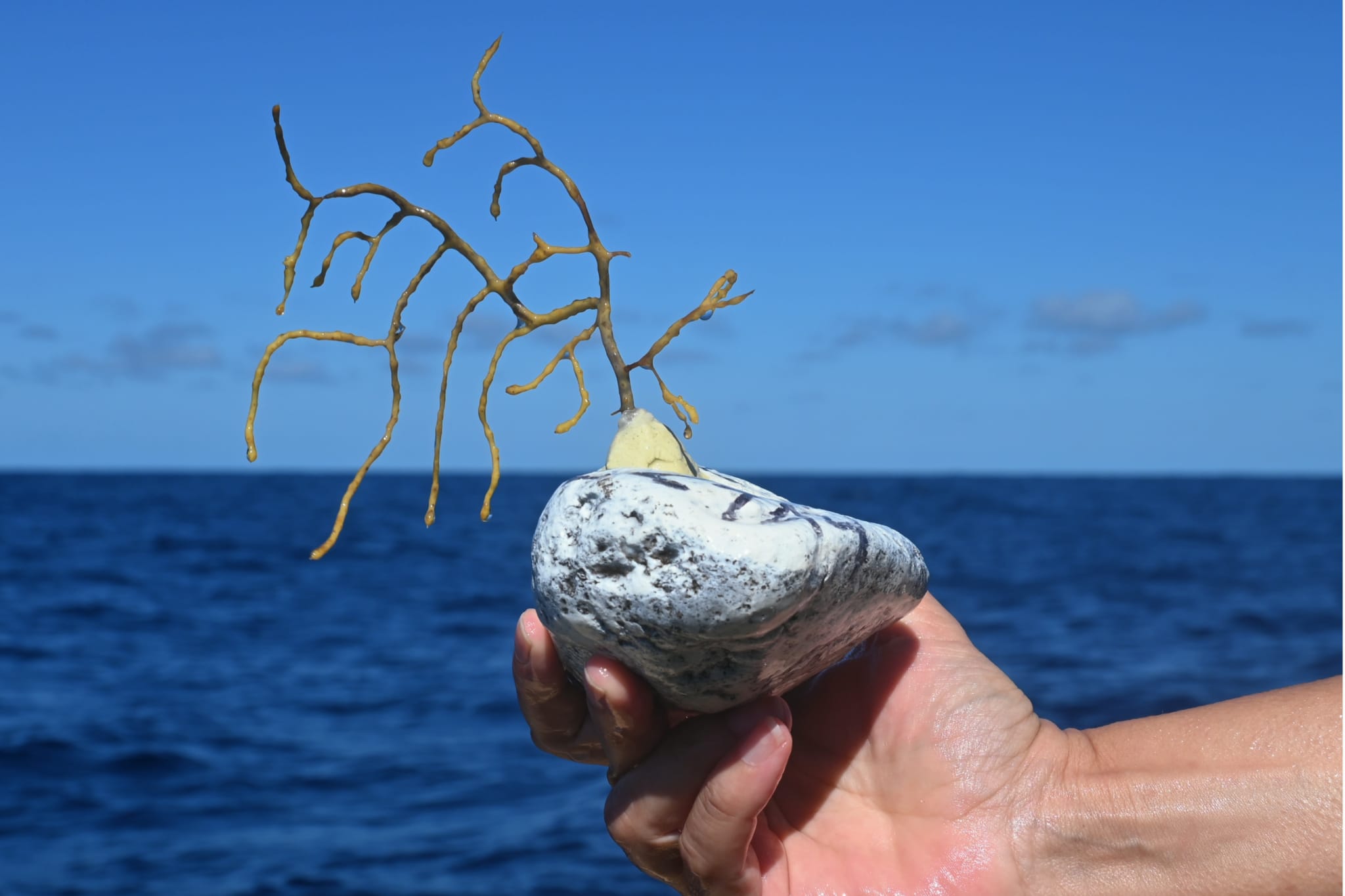O Azores Deep-Sea Research Group do OKEANOS está a testar metodologias de restauro de baixo custo para ajudar a recuperar ecossistemas de mar profundo degradados, no âmbito do Projeto REDRESS.
No banco submarino Condor, o grupo tem vindo a testar uma metodologia que utiliza corais capturados acidentalmente durante as operações de pesca de palangre, devolvendo-os ao mar através da sua fixação a uma pedra.
Este método tem o nome de Badminton devido à morfologia em forma de leque das colónias presas às pedras, que faz com que funcionem como uma pena de badminton, abrandando a queda e facilitando uma aterragem vertical. As pedras com os corais são colocadas dentro de uma gaiola especialmente concebida para as deixar cair perto do fundo.
No caminho para o Condor, a equipa analisa informações que ajudam a selecionar o local para a libertação dos corais. No próximo ano, o local será visitado novamente com a Azor Drift-Cam para confirmar que os corais estão na posição correta e ainda vivos.
Se for bem sucedida, esta metodologia poderá ser utilizada no futuro em colaboração com os pescadores.
Assiste ao vídeo que fizemos sobre esta metodologia aqui:
https://www.linkedin.com/feed/update/urn:li:activity:7262817183829794816/?actorCompanyId=86158442EN:
The Azores Deep Sea Research Group at OKEANOS is testing low-cost restoration methodologies to help recover degraded deep-sea ecosystems as part of the Horizon Europe project REDRESS.
At Condor Seamount, the group have been testing a methodology that uses corals accidentally caught during the hook-and-line fisheries operations, and returns them to the sea by attaching them to cobbles. This method is named badminton because the fan-shaped morphology of the colonies attached to the cobbles which makes them act as a badminton shuttlecock, slowing down the fall and facilitating an upright landing. The cobbles are placed inside a specially designed cage that drops them close to the bottom.
On the way to Condor, the team looks at information that helps the selection of the site for the release of the corals. Next year, the site will be visited again with the Azor Drift-Cam to confirm that the corals are in the right position and still alive.


 VALTER MEDEIROS, with my special thanks to @all.
VALTER MEDEIROS, with my special thanks to @all.